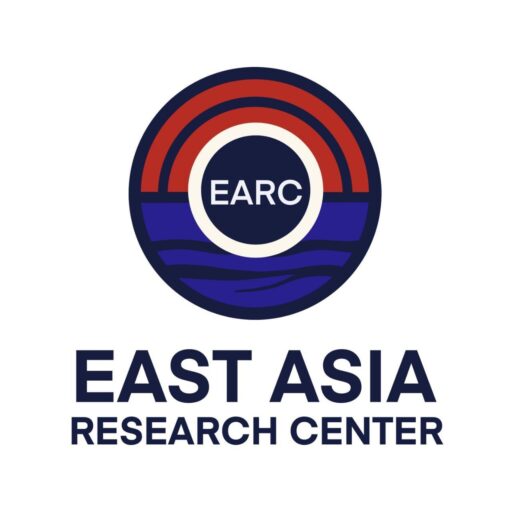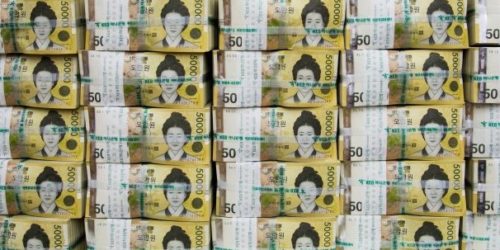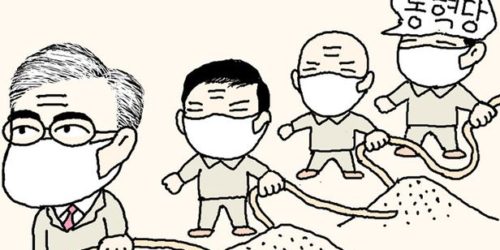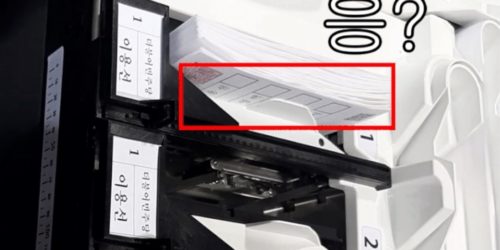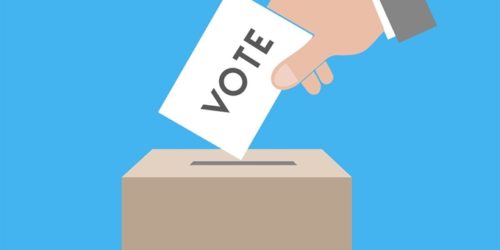Street Polls in South Korea Show 33% Support for Moon Jae-in, Much Less than Realmeter and Gallup Korea
2019-8-5, Tara O
Recent street polls in South Korea show that roughly 33% of the public approves and 62% disapproves of President Moon Jae-in’s job performance in the past couple of months. This is quite different from Realmeter’s poll results of 49.4% approval and 45.8.0% disapproval rates around a similar period. The differences are 16.4% lower approval rate and 16.2% higher disapproval rate. Similar to Realmeter, Gallup Korea’s poll showed a 48% approval rate on July 31-Aug 1, 2019, which was the same as the previous week. The large gaps between the street polls vs. Realmeter/Gallup Korea raise numerous questions. Which one is closer to reality? Why is the difference so large? What is the methodology used by these companies? What questions are they asking? This report reviews some of the problems with the polls often used by these companies and discusses the street poll results from various locations around South Korea (see Appendix A).
Questioning the Accuracy of Traditional Polls
Realmeter and Gallup Korea are the two most often used sources of polling opinion data in South Korea. Over the last two and a half years, many South Koreans have reported questionable polling practices and have disputed the accuracy of polling results from the two firms. The approval rates from these organizations consistently show relatively high approval rates for Moon, despite the worsening economic and security situations. The questionable polling practices are detailed in the Realmeter’s Questionable Polling Practices and Concerns Regarding Gallup Korea sections below. The results of the recent Street Polls suggest President Moon’s approval rating is significantly lower than those reported by Gallup Korea and Realmeter, even in areas where President Moon has traditionally enjoyed significant political support.
Polling methodology and findings
YouTube channels–Jayooui Chang (freedom’s windows), Korean and Truths, and others–decided to find out the public sentiment for themselves and conducted street polls in various locations around Korea starting in late May 2019. The Street polling conducted by the various Youtube channels followed a straightforward and transparent methodology. The phrasing of the question “Is President Moon Jae-in doing a good job or a bad job?” is simple and neutrally worded to not introduce bias into the answer. The street polls were recorded on video for transparency. The choice of polling locations was driven by the need to select high traffic areas, most notably public transportation hubs, shopping areas, and universities. Geographic locations included a diverse mix of cities across Korea, including canvassing areas known to have higher concentrations of Moon Jae-in supporters, such as Gwangju (near South Jeolla Province), certain parts of Seoul (such as industrial Nowon District and wealthy Gangnam District), certain parts of Incheon (Gyeyang District), Anyang City, and Ansan City. A detailed map of polling locations within South Korea and the results of these opinion polls are shown below.
Overall Street Poll Results: 33% Approve, 62% Disapprove
Overall, these polls indicate that roughly 33% of the public approves of Moon’s performance as the president, while 62% disapproves (sample size of 4,226). The approval rate was highest in Yeoido (55%), near the National Assembly and Gwangju (50%), where parties on the left have traditionally enjoyed strong political support. Moon’s support was lowest in Osan where approval hovered around 17%. Conversely, disapproval was highest in Osan (79.2%) and lowest in Gwangju (28.3%). Incidentally, Gwangju also had the highest number of people who answered “don’t know” (21.7%). For a detailed explanation of the polling results and source documentation, see Appendix A.
Problems with the polling conducted by Realmeter and Gallup Korea
Realmeter most routinely, but also Gallup Korea have often taken public opinion polls throughout the Moon administration. The poll conducted by RealMeter for the 5th week of July, 2019, shows a 49% positive assessment of Moon Jae-in as the president, and a 47% negative assessment. The aggregate from the 5th week of May to the 5th week of July 2019 per the below chart indicates Moon Jae-in has a 49.4% approval rate and a 45.8% disapproval rate. (Note: The average of the aggregated figure started with the 5th week of May’s Realmeter poll results, since the data used for the Street Polls’s aggregated average began in the 5th week of May.)
Moon’s rate seems to stay relatively high, despite the high unemployment rate, and worsening economic conditions. More and more people are questioning whether the polls by Realmeter and Gallup Korea actually reflect reality.
Realmeter’s questionable polling practices
Many people have recorded phone interview polls conducted by Realmeter. Below is a selection of interviews that identify some of the serious flaws in their opinion taking methodology. Errors include not providing sufficient background, asking leading questions, asking misleading questions, and broken phone trees which do not record negative answers.
A recording of Realmeter polling by phone:
Example 1:
National Assemblyman Park Kwang-on (박광온), Deobureo Minjoo Party (Democratic Party of Korea) stated on April 24, 2019 that nearly 80% of people support the creation of Senior Official Crimes Investigation Unit or Gongsoocheo. (Gongsoocheo would fall under the control of the president and it can be used to control the judges, prosecutors, and others even more. See here for details on Gongsoocheo. For Park Kwang-on’s efforts to try to suppress free speech on YouTube, see here.) Deobureo Minjoo Party and the Blue Housed cited a Realmeter poll. Here’s how Realmeter worded the question on Gongsoocheo.
Q: In September two years ago (2017), a proposal was announced. The proposal was to create a Senior Official Crimes Investigation Unit or Gongsoocheo to independently investigate the crimes of the president, lawmakers, judges, prosecutors, senior officials and senior police officers, etc. Following this, in November last year, the bill was introduced. What do you think about establishing Senior Official Crimes Investigation Unit?
- Very much agree
- Agree
- Oppose
- Very much oppose
- Don’t know
This question does not point out the pros and cons of Gongsoocheo. Rather it focuses on investigating senior officials. It does not point out that North Korea also has a similar system designed to control senior officials by the ruler. A YouTuber pointed out the use of “independently investigate” is misleading, because the way it is envisioned is structured so that it must fall under the president, (4:17) thus it will not become an “independent” entity. Using the term “independent” and not explaining the down sides could lead people polled to choose agree or very much agree, and is reflected in nearly 80% agreeing. (0:47)
Example 2:
Q: At the south-north summit on the 27th last month, President Moon Jae-in and Chairman Kim Jong-un declared the Panmunjeom Declaration, which centers on complete denuclearization and establishing a peace regime. What do you think about the National Assembly ratifying the Panmunjeom Declaration?
- Very much agree
- Agree
- Oppose
- Very much oppose
- Don’t know
This was a phone tree poll. The person taking the poll pressed “4,” but the automated message kept repeating “you pressed the wrong button. Please check and re-press the number.” (2:00) It then repeated the question, and the same error message was heard again. Additionally, the question does not explain the difference between “denuclearization of North Korea” and “denuclearization of the Korean Peninsula.” The latter has been pursued by North Korea to mean denuclearization of South Korea, which doesn’t have nuclear weapons; by extension, it means no U.S. nuclear umbrella and a step further, no U.S. troops in South Korea. For further details, see here.
Example 3:
Another question pertains to the Supreme Court judge candidate Lee Mi-seon (이미선), who was the subject of allegations of illegal activities, including insider trading and conflicts of interest, exposed during National Assembly questioning. Needless to say, the National Assembly did not approve her, but Moon hurriedly appointed her to the Supreme Court in defiance of the National Assembly via electronic approval while he was visiting Kazakhstan. Polls were taken during this time as well, but instead of asking the same question twice and comparing the results, differently phrased questions were asked about Lee Mi-seon.
On April 12, 2019, Realmeter asked “The National Assembly held a hearing recently on the Supreme Court judge candidate Lee Mi-seon. (2:20) What do you think about her qualifications as a Supreme Court Judge?
504 people answered: Qualified: 28.8% Not Qualified: 54.6%
Five days later on April 17, Realmeter asked a differently worded question. (3:21) “As the ruling and opposition politicians are clashing over the Supreme Court judge candidate, President Moon Jae-in has again requested an approval letter from the National Assembly. What do you think about President Moon appointing candidate Lee Mi-seon to the Supreme Court?
501 people answered: Agree: 43.3% Disagree: 44.2%
The question changed from whether Lee was qualified or not to whether people agree with Moon appointing her, which gave the impression, in less than one week, that people supported Lee becoming a Supreme Court judge.
Both surveys were conducted by Realmeter, and they demonstrate how the way questions are worded in a survey can produce different outcomes.
Example 4:
In another recorded case, Realmeter asks a confusing question that is difficult to answer. (0:06)
Statement to answer yes or no: Depending on the situation, President Moon seems like he changes his words and actions…not.
- Yes
- No
The woman who was polled stated that she does indeed think Moon changes his words and deeds, but is not sure which answer, yes or no, supports her position. Thus the conversation goes back and forth between the polled and the poller to determine which answer supports the polled’ position. People may know their positions, but they can easily choose the answer that is opposite of what they are thinking, given the way the question and answers are structured.
Concerns regarding Gallup Korea
In June 2017, Gallup Korea conducted a poll, which showed 99% approval rate for Moon Jae-in in Gwangju Metropolitan City, South Jeolla Province, and North Jeolla Province (together “Honam” area), and 83% for nationwide approval rate. A month earlier in May 2017, Moon received 41% of the vote to become the president. It is possible that the rates were that high, but 99% approval rate seems unseemingly high, even for Honam area. The questionnaires were not divulged. It is also unclear how the polled were chosen.
There were times when the both Gallup Korea and Realmeter poll on the same topic of approval/disapproval for Moon. In those instances, the results published by Gallup Korea appear to be within a few points of the results published by Realmeter.
It is important to note that Gallup Korea is not associated with Gallup in the U.S., as seen in the letter below from Gallup, which states:
“Gallup has absolutely no association with Gallup Korea…they trade off the reputation of Dr. Gallup and our firm…the firm which operates as Gallup Korea paid nothing for the name and actually stole from Gallup and the Gallup family….the unfortunate situation is that your government has become complicit in this larceny by allowing certain individuals to register a trademark and perpetuate the myth that the company is tied to Gallup.”
Letter from Gallup to the Liberty Korea Party asking that Gallup Korea cease using the Gallup name.
Street Polls
While the street polls may not represent an apples-to-apples comparison due to different methodologies and time periods, they do provide additional data points, and their methods are transparent and simple.
With the caveat that the methods and the time periods are not the same, the street poll “support/good job” rate of 33.6% is much lower than Realmeter’s 49.4% and the street poll “not support/bad job” rate of 62.8% is much higher than Realmeter’s 45.8%.
Given the questionable practices of Realmeter and Gallup Korea and the fact that their results consistently suggest Moon Jae-in’s approval rating is relatively immune to bad news, perhaps street polling provides an alternative method to understanding public opinion in South Korea.
———-
Appendix A
Detailed street polling results and findings
(Note: Metropolitan Cities are equivalent administrative unit to Provinces. Thus Gwangju Metropolitan City, surrounded by South Jeolla Province, is different than Gwangju City, Gyeonggi Province.)
Seoul Metropolitan City, Seoul Station, 2019-5-27
-Good Job/Support: 74 / 212 (34.9 %)
-Bad Job/Not Support: 127 / 212 (59.9%)
-Don’t Know: 11 / 212 (5.2%)
Seoul Metropolitan City, Yonsei University, 2019-6-4
Good Job/Support: 68 / 239 (28.5%)
Bad Job/Not Support: 171 / 239 (71.5%)
Don’t Know: –
Gwangju Metropolitan City, Jeonnam (South Jeolla) University, 2019-6-10
Gwangju and Jeolla Provinces (south and north, all three together are called “Honam”) have traditionally supported Kim Dae-jung and parties on the left. The approval rate in the Gwangju/Jeolla area for Moon was 99% in June 2017, according to Gallup Korea, which asked 102 people in the area. As such, they were expecting much higher approval rate than what they found.
Gwangju Station did not have much foot traffic, so the street poll was moved to Jeonnam University, where there were more people.
-Good Job: 46/92 (50.0%)
-Bad Job: 26/92 (28.3%)
-Don’t Know: 20/92 (21.7%)
Note: The “Dont’ Know” rate was rather high at 21.7% in Gwangju. None of the other cities had so many “Don’t Knows.” If this category is disregarded, then Good Job: 46/72 (63.9%) and Bad Job: 26/72 (36.1%). Either way, the approval rate is far lower than expected–some people expected 90% or higher.
Daejeon Metropolitan City, Daejeon Station, 2019-6-11
-Good Job: 60/158 (37.9%)
-Bad Job: 98/158 (62.0%)
-Don’t Know: –
Daejeon Metropolitan City, KAIST (Korea Advanced Institute of Science & Technology) University, 2019-6-11
It turned out the date was an exam day, so less participation.
-Good Job: 23/61 (37.7%)
-Bad Job: 38/61 (62.2%)
-Don’t Know: –
Gyeonggi Province, Anyang City, Lotte Cinema near Anyang Station, 2019-6-19
-Good Job: 54 / 140 (38.5%)
-Bad Job: 73 / 140 (62.2%)
-Don’t Know: 9 / 140 (6.4%)
-Don’t Care: 4 / 140 (2.8%)
Seoul, Seoul National University, 2019-6-21
-Good Job: 39 / 145 (26.9%)
-Bad Job: 97 / 145 (66.9%)
-Don’t Know: 9 / 145 (6.2%)
Incheon Metropolitan City, East Incheon Station, 2019-6-22
There were not many people at Incheon Station, so the poll was moved to East Incheon Station. As seen in the picture above, the youtube video had over 294,000 views with 14,000 Likes and 337 Dislikes on the day accessed. The dislikes are interesting. Do they dislike the methodology or do they dislike the results, because these show a lower support rate than the Realmeter and Gallop Korea?
-Good Job: 124 / 445 (27.8%)
-Bad Job: 310 / 445 (69.6%)
-Don’t Know: 7 / 445 (1.57%)
-Don’t Care: 5 / 445 (0.8%)
Incheon Metropolitan City, Gyeyang District, (by Lotte Mart), 2019-6-27, 1st Poll
This part of Incheon is relatively low population density. So the YouTuber went back on July 2, 2019.
-Good Job: 12 / 26 (46.2%)
-Bad Job: 14 / 26 (53.8%)
-Don’t know: –
Incheon Metropolitan City, Gyeyang District, (in front of eMart), 2019-7-2, 2nd Poll
-Good Job: 15 / 43 (34.9%)
-Bad Job: 27 / 43 (62.8%)
-Don’t know: 1 / 43 (2.3%)
Seoul, Yeoido, Yeoido Station, 2019-6-28
-Good Job: 122 / 219 (55.7%)
-Bad Job: 90 / 219 (49.1%)
-Don’t Know: 6 / 219 (2.7%)
-Don’t Care: 1 / 219 (0.5%)
Note: There were a lot of people walking by, but far less people participated, especially compared to Incheon. Yeoido is where the National Assembly is located.
Gunpo City, Gyeonggi Province, Sanbon Station, 2019-6-30
At the 59th Special Election (2017 Presidential Election), Moon Jae-in received 44.36% of the votes. Moon + Sim Sang Jeong (심상정) + Ahn Cheol-soo (안철수): 73.64% of the votes. The participation rate was high for this street poll.
-Good Job/Support: 72 / 241 (29.9%) (M: 22, F: 50)
-Bad Job/Not Support: 169 / 241 (70.1%) (M: 79, F: 90)
-Don’t know: –
Seoul, Gangnam Station, 2019-7-2
One of the lowest participation rates, despite a lot of people.
-Good Job: 30 / 77 (39.0%)
-Bad Job: 44 / 77 (57.1%)
-Don’t Know: 2 / 77 (2.6%)
-Don’t Care: 1 / 77 (1.3%)
Gyeonggi Province, Osan City, Osan Station, 2019-7-8
-Good Job: 9 / 53 (17.0%)
-Bad Job: 42 / 53 (79.2%)
-Don’t know: 2 / 53 (3.8%)
Busan Metropolitan City, Seomyeon Station, 2019-7-8
Seomyeon is a relatively busy area of Busan.
-Good Job: 30 / 84 (35.7%)
-Bad Job: 50 / 84 (59.5%)
-Don’t Know: 2 / 84 (2.3%)
-Don’t Care: 2 / 84 (2.3%)
Busan Metropolitan City, Busan Station, 2019-7-9
-Good Job: 110 / 334 (32.9%)
-Bad Job: 201 / 334 (60.1%)
-Don’t Know: 16 / 334 (4.7%)
-Don’t Care: 7 / 334 (2.0%)
Uijongbu City, Gyeonggi Province, Uijongbu Station, 2019-7-12
During the 59th Special Election (2017 Presidential Election), Moon received 40.89% of the votes.
-Good Job: 34 / 109 (31.2%)
-Bad Job: 74 / 109 (67.9%)
-Don’t Know: 1 / 109 (0.09%)
Geyonggi Province, Bucheon City, Bucheon Station (north entrance by shopping mall), 2019-7-15
During the 59th Special Election (2017 Presidential Election), the following votes were received. Of 543,777 total votes, Moon: 239,697 (44%); Sim: 37,775 (6.8%); Ahn: 128,297(23.6%). Moon + Sim: 50.8%. Moon + Sim + Ahn: 74.4%.
-Good Job: 37 / 107 (34.6%)
-Bad Job: 70 / 107 (65.4%)
-Don’t know: 1 / 107 (0.9%)
Gangwon Province, Wonju City, Wonju Bus Terminal, 2019-7-17
-Good Job: 14 / 51 (27.5%)
-Bad Job: 29 / 51 (56.9%)
-Don’t Know: 6 / 51 (11.8%)
-Don’t Care: 2 / 51 (3.9%)
Gyeonggi Province, Yongin City, in front of Yongin Bus Terminal, 2019-7-17
-Good Job: 15 / 42 (35.7%)
-Bad Job: 15 / 42 (35.7%)
-Don’t Know: 9 / 42 (21.4%)
-Don’t Care: 3 / 42 (7.1%)
Seoul, Nowon District, near Nowon Station, 2019-7-18
During the 59th Special Election (Special Presidential Election in 2017), this district residents voted as follows: Moon Jae-in: 42%, Sim: 6.5%, Ahn: 24.7%; the three together 73%.
-Good Job: 46 / 108 (42.6%) (M: 20, F: 26)
-Bad Job: 61 / 108 (56.5%) (M: 35, F: 26)
-Don’t know: 1 / 108 (0.9%) (F: 1)
Gyeonggi Province, Seongnam City, Moran Station, 2019-7-19
-Good Job: 70 / 179 (39.1%)
-Bad Job: 108 /179 (60.3%)
-Don’t Know: 1 /179 (0.6%)
-Don’t Care: –
Gyeonggi Province, Ansan City, Danwon District, Gojan Station, 2019-7-19
During the 59th Special Election (2017 Presidential Election), Moon + Sim: 50.2%; Moon + Sim + Ahn: nearly 74%, https://youtu.be/umUuIPJpbqQ
-Good Job: 43 / 115 (37.4%) (M: 28, F: 15)
-Bad Job: 72 / 115 (62.6%) (M: 53; F: 19)
-Don’t know: –
Daegu Metropolitan City, Daegu Station, 2019-7-23
-Good Job: 41 / 187 (21.9%)
-Bad Job: 114 / 187 (61.0%)
-Don’t Know: 24 / 187 (12.8%)
-Don’t Care: 8 / 187 (4.3%)
Incheon Metropolitan City, Bupyeong District, Dongam Station, 2019-7-24
-Good Job: 10 / 26 (38.5%)
-Bad Job: 16 / 26 (61.5%)
-Don’t know: –
Gyeonggi Province, Goyang City, Deogyang District, Hwajeong Station, 2019-7-25
Over 73% votes were for Moon Jae-in, Sim Sang-jeong, Ahn Cheol-soo here)
-Good Job: 47 / 158 (29.8%) (M: 22, F: 25)
-Bad Job: 111 / 158 (72.3%) (M: 64, F: 47)
-Don’t know: –
Seoul, Eunpyeong District, Yeonsinnae Station, 2019-7-30
-Good Job: 48 / 171 (28.1%) (M: 21, F: 27)
-Bad Job: 123 / 171 (71.9%) (M: 74, F: 49)
-Don’t know: –
Gyeonggi Province, Gwangmyeong City, Gwangmyeong Crossroads Station, 2019-7-31
Gwangmyeong City has 4 representatives in the State Assembly, all of whom are Deobureo Minjoo Party. There are a total of 142 representatives in Gyeonggi Province; 135 are Deobureo Minjoo Party, 2 are Justice Party, so 137/142=96.4%, https://youtu.be/qheI4Zk18aI (4:43)
-Good Job: 29 / 116 (25.0%) (M: 11, F: 18)
-Bad Job: 87 / 116 (75.0%) (M: 40, F: 47)
-Don’t know: –
Gyeonggi Province, Gwangju City, Gyeonggi Gwangju Station, 2019-7-31
(Note: Although it has the same name, this Gwangju City in Gyeonggi Province is different from Gwangju Metropolitan City surrounded by South Jeolla Province.)
Traditionally, the city mayor used to be conservative. But in the 59th Special Election (special presidential election of 2017), the vote results were Moon: 40.23%; Moon + Sim: 46.9%; Moon + Sim + Ahn: 70.2%. In the 2018-6-13 regional elections, the Deobureo Minjoo Party candidate for mayor received 61.1% votes, https://youtu.be/ycSt73n2GTY (1:23). In the same election, 130 of 131, or 99%, of Gyeonggi Province representatives to the Gyeonggi Province Legislature were Deobureo Minjoo Party).
-Good Job: 16 / 50 (32.0%) (M: 22, F: 25)
-Bad Job: 34 / 50 (68.0%) (M: 64, F: 47)
-Don’t know: –
Seoul, Dongjak District, Noryangjin Neighborhood, 2019-8-1
-Good Job/Support: 40 / 116 (34.5%)
-Bad Job/Not Support: 76 / 116 (65.5%)
-Don’t Know: –
Gyeonggi Province, Anyang City, Dongan District, near Beomgye Station, 2019-8-2
During the 59th Special Election (2017 Presidential Election), Anyang’s votes for Moon Jae-in: 43.9%, Moon + Sim: 50.53%; Moon + Sim + Ahn: 73%
-Good Job/Support: 35 / 122 (28.7%)
-Bad Job/Not Support: 87 / 122 (71.3%)
-Don’t Know: –
——-
In the street polls, the highest approval rate for Moon was 50% in Gwangju Metropolitan City, Jeonnam University on June 10, 2019. The disapproval rate there was 28.3%. The place with the lowest approval rate for Moon was Osan Station at 17% on July 8, 2019. The disapproval rate at Osan Station was 79.2%.
The polls were taken at various locations, but not in a single day, but over a longer period of time, from May 27, 2019 to August 2, 2019. The below chart lists the street polls mentioned above and shows the total and average percentage in the last row.
Street Polls Chart: Dates, Location, Good Job/Bad Job to the Question: Is Moon Jae-in doing a good or bad job?
| Date | Province | City | Location; gu=district | Total | Good Job | % | Bad Job | % | Don’t Know | % | Don’t care | % |
| 5/27 | – | Seoul | Seoul Station | 212 | 74 | 34.9% | 127 | 59.9% | 11 | 5.2% | – | |
| 6/4 | – | Seoul | Yonsei University | 239 | 68 | 28.5% | 171 | 71.5% | – | – | ||
| 6/10 | – | Gwangju | Jeonnam University | 92 | 46 | 50.0% | 26 | 28.3% | 20 | 21.7% | – | |
| 6/11 | – | Daejon | Daejon Stn | 158 | 68 | 43.0% | 98 | 62.0% | – | – | ||
| 6/11 | – | Daejon | KAIST Univ | 61 | 23 | 37.7% | 38 | 62.3% | – | – | ||
| 6/19 | Gyeonggi | Anyang | Nr Anyang Stn, Lotte Mart | 140 | 54 | 38.6% | 73 | 52.1% | 9 | 6.4% | 4 | 2.9% |
| 6/21 | – | Seoul | Seoul National Univ | 145 | 39 | 26.9% | 97 | 66.9% | 9 | 6.2% | – | |
| 6/22 | – | Incheon | East Incheon Station | 445 | 124 | 27.9% | 310 | 69.7% | 7 | 1.6% | 4 | 0.9% |
| 6/27 | – | Incheon | Gyeyang-gu, Lotte Mart | 26 | 12 | 46.2% | 14 | 53.8% | – | – | ||
| 6/28 | – | Seoul | Yoido Stn | 219 | 122 | 55.7% | 90 | 41.1% | 6 | 2.7% | 1 | 0.5% |
| 6/30 | Gyeonggi | Gunpo | Sanbon Stn | 241 | 72 | 29.9% | 169 | 70.1% | – | – | ||
| 7/2 | – | Incheon | Gyeyang-gu, eMart | 43 | 15 | 34.9% | 27 | 62.8% | 1 | 2.3% | – | |
| 7/2 | – | Seoul | Gangnam-gu | 77 | 30 | 39.0% | 44 | 57.1% | 2 | 2.6% | 1 | 1.3% |
| 7/8 | Gyeonggi | Osan | Osan Stn | 53 | 9 | 17.0% | 42 | 79.2% | 2 | 3.8% | – | |
| 7/8 | – | Busan | Seomyeon Stn | 84 | 30 | 35.7% | 50 | 59.5% | 2 | 2.4% | 2 | 2.4% |
| 7/9 | – | Busan | Busan Stn | 334 | 110 | 32.9% | 201 | 60.2% | 16 | 4.8% | 7 | 2.1% |
| 7/12 | Gyeonggi | Uijongbu | Uijongbu Stn | 109 | 34 | 31.2% | 74 | 67.9% | 1 | 0.9% | – | |
| 7/15 | Gyeonggi | Bucheon | Bucheon Stn | 107 | 37 | 34.6% | 70 | 65.4% | 1 | 0.9% | – | |
| 7/17 | Gangwon | Wonju | Wonju Bus Terminal | 51 | 14 | 27.5% | 29 | 56.9% | 6 | 11.8% | 2 | 3.9% |
| 7/17 | Gyeonggi | Yongin | Yongin Bus Terminal | 42 | 15 | 35.7% | 15 | 35.7% | 9 | 21.4% | 3 | 7.1% |
| 7/18 | – | Seoul | Nowon-gu, Nowon Station | 108 | 46 | 42.6% | 61 | 56.5% | 1 | 0.9% | – | |
| 7/19 | Gyeonggi | Seongnam | Moran Station | 179 | 70 | 39.1% | 108 | 60.3% | 1 | 0.6% | – | |
| 7/19 | Gyeonggi | Ansan | Danwon-gu, Gojan Station | 115 | 43 | 37.4% | 72 | 62.6% | 0.0% | – | ||
| 7/23 | – | Daegu | Daegu Station | 187 | 41 | 21.9% | 114 | 61.0% | 24 | 12.8% | 8 | 4.3% |
| 7/24 | – | Incheon | Bupyeong-gu, Dongam Station | 26 | 10 | 38.5% | 16 | 61.5% | – | – | ||
| 7/25 | Gyeonggi | Goyang | Deogyang-gu, Hwajeong Station | 158 | 47 | 29.7% | 111 | 70.3% | – | – | ||
| 7/30 | – | Seoul | Eunpyeong-gu, Yeonsinnae Station | 171 | 48 | 28.1% | 123 | 71.9% | – | – | ||
| 7/31 | Gyeonggi | Gwang- myeong | Gwangmyeong Crossroads Station | 116 | 29 | 25.0% | 87 | 75.0% | – | – | ||
| 7/31 | Gyeonggi | Gwangju | Gyeonggi Gwangju Station | 50 | 16 | 32.0% | 34 | 68.0% | – | – | ||
| 8/1 | – | Seoul | Dongjak-gu, Noryangjin | 116 | 40 | 34.5% | 76 | 65.5% | – | – | ||
| 8/2 | Gyeonggi | Anyang | Dongan-gu, Beomgye Station | 122 | 35 | 28.7% | 87 | 71.3% | – | – | ||
| Total | 4226 | 1421 | 33.6% | 2654 | 62.8% | 128 | 3.0% | 32 | 0.8% |
